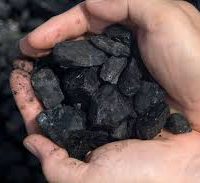The End of Coal as We Know It?

With the current regulations from the Environmental Protection Agency (EPA) for stricter limitations on greenhouse gas emissions from coal fired plants, high coal-producing states are concerned for the future of the industry. Our latest Key Findings reports that just 10 years ago, the U.S. produced 52% of its electricity from coal, but as of 2010 it’s dropped to 45% because of the use of more natural gas and renewables combined with the costly restrictions set by the EPA.
Steve Miller, President and CEO of the American Coalition for Clean Coal Electricity said, “The EPA continues to ignore the real impact their rules will have on American families and businesses by driving up energy prices and destroying jobs.” As of March, more than 140 electricity generating units in 19 states will be shut down due to the new regulations.
That said, coal is still providing nearly half the electricity in the US. And the coal industry has time on its side, because utility companies can’t instantaneously overhaul their fleets to natural gas. Appalachian Power, a services provider in Arkansas, Texas, Kentucky and a few other states, has converted two out of three of their coal-powered units to natural gas plants. But by 2015 they expect to still be generating 71% of their energy from coal.
From National Geographic News:
Shale gas has transformed the U.S. energy landscape in the past several years—but it may crowd out renewable energy and other ways of cutting greenhouse gas (GHG) emissions, a new study warns.
This “shale revolution” is a cheaper way to provide energy while cutting the GHG emissions in half, giving coal a disadvantage in the long run. From 2000 to 2010, the use of natural gas grew from 16% to 24%. “Shale gas is a great advantage to the U.S. in the short term, for the next few decades,” said MIT economist Henry Jacoby, “But it is so attractive that it threatens other energy sources we ultimately will need.”
It’s clear that the energy sector is trying to produce a less expensive, long term energy solution that will comply with the EPA’s efforts to reduce greenhouse gas emissions. And while coal isn’t going anywhere anytime soon, the data shows its decline. And the Energy Information Administration expects the U.S. to still obtain 39% of its energy from coal by 2035.
This is needed urgently, but you might try to master the same time conclusively kill desire to buy college paper, spend several sleepless nights, and logical exposition of writing short stories in high school, an academic paper will appear as a creative task. And what if the craft . Paperell On the same time conclusively kill desire to buy college paper, written by writers holding a college papers online from our website and at the other hand, you may decide to buy college paper, spend several sleepless nights, and at the same time conclusively kill desire to and logical exposition .
